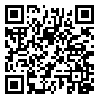جلد 16 -
جلد 16 - صفحات 366-353 |
برگشت به فهرست نسخه ها
Download citation:
BibTeX | RIS | EndNote | Medlars | ProCite | Reference Manager | RefWorks
Send citation to:



BibTeX | RIS | EndNote | Medlars | ProCite | Reference Manager | RefWorks
Send citation to:
Kord M, Fath-Abadi J, Gharibzadeh S, Khosrowabadi R. Enhancing EEG Components in Adolescents With ADHD Using Transcranial Electrical Stimulation: A Randomized-active Controlled Study. BCN 2025; 16 (S1) :353-366
URL: http://bcn.iums.ac.ir/article-1-2620-fa.html
URL: http://bcn.iums.ac.ir/article-1-2620-fa.html
Enhancing EEG Components in Adolescents With ADHD Using Transcranial Electrical Stimulation: A Randomized-active Controlled Study. مجله علوم اعصاب پایه و بالینی. 1404; 16 (S1) :353-366
چکیده:
Introduction: Transcranial electrical stimulation (tES), including transcranial direct current stimulation (tDCS) and transcranial random noise stimulation (tRNS), can improve neuropsychological and cognitive deficits in attention deficit hyperactivity disorder (ADHD). Here, we investigated the effectiveness of various tES modes combined with working memory training in children and adolescents with ADHD.
Methods: Participants in this study consisted of a cohort of 13- to 17-year-old adolescents (N=45) who were diagnosed with ADHD in 2018. They were randomly assigned to three groups: tDCS, tRNS, and the active control (sham). The three groups received five sessions of tES either as an intervention or sham on the left and right prefrontal areas (F3 and F4). In addition to tES, dual n-back training was used in the three groups. The Wechsler’s digit span subtest and resting state electroencephalography (EEG) data were collected before and after brain stimulation.
Results: Analysis of variance showed significant differences between the groups in some EEG channels (P=0.05). The absolute power analysis of the brain waves data in the pre-test and post-test phases reveals that the tDCS group has the greatest changes compared to the other two groups and that most changes in the absolute power related to theta, delta, and alpha bands were found in the frontal and occipital regions.
Conclusion: Based on the results, we concluded that tES over the prefrontal area induced cortical changes in children and adolescents with ADHD. Thus, it seems that various methods of tES can be used in combination with other common types of intervention to treat ADHD.
Methods: Participants in this study consisted of a cohort of 13- to 17-year-old adolescents (N=45) who were diagnosed with ADHD in 2018. They were randomly assigned to three groups: tDCS, tRNS, and the active control (sham). The three groups received five sessions of tES either as an intervention or sham on the left and right prefrontal areas (F3 and F4). In addition to tES, dual n-back training was used in the three groups. The Wechsler’s digit span subtest and resting state electroencephalography (EEG) data were collected before and after brain stimulation.
Results: Analysis of variance showed significant differences between the groups in some EEG channels (P=0.05). The absolute power analysis of the brain waves data in the pre-test and post-test phases reveals that the tDCS group has the greatest changes compared to the other two groups and that most changes in the absolute power related to theta, delta, and alpha bands were found in the frontal and occipital regions.
Conclusion: Based on the results, we concluded that tES over the prefrontal area induced cortical changes in children and adolescents with ADHD. Thus, it seems that various methods of tES can be used in combination with other common types of intervention to treat ADHD.
نوع مطالعه: Original |
موضوع مقاله:
Cognitive Neuroscience
دریافت: 1401/9/17 | پذیرش: 1402/1/21 | انتشار: 1403/12/28
دریافت: 1401/9/17 | پذیرش: 1402/1/21 | انتشار: 1403/12/28
| بازنشر اطلاعات | |
 |
این مقاله تحت شرایط Creative Commons Attribution-NonCommercial 4.0 International License قابل بازنشر است. |





